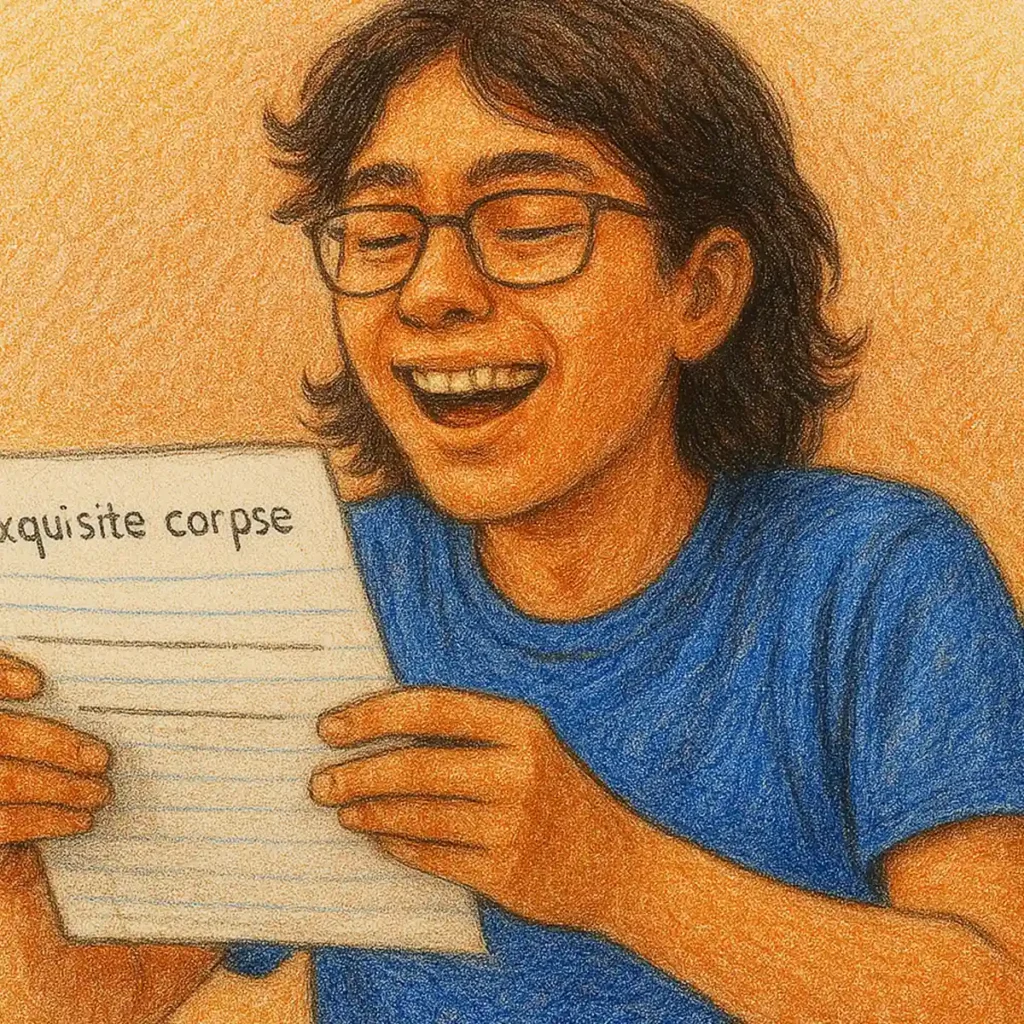There’s nothing like a little poetic chaos to ignite the imagination—and exquisite corpse poetry is the perfect way to do just that. This lesson plan transforms your classroom into a whirlwind of creativity, surprise, and delightful absurdity. Ready to have your students giggling, writing, and maybe even questioning their understanding of poetry? Let’s dive in.
Grade Level
6–12 (Flexible for various writing levels)
Time Needed
1–2 class periods (45–60 minutes each)
Materials
Lined paper or printed poetry templates
Pens or pencils
A document camera (optional for sharing)
A sturdy sense of humor
Learning Objectives
By the end of this lesson, students will:
Understand the concept of exquisite corpse poetry and its surrealist origins
Collaborate with peers to create original group poems
Experiment with poetic language, tone, and imagery
Practice spontaneity and risk-taking in their writing
What Is Exquisite Corpse Poetry?
Let’s get a bit artsy for a second. Exquisite corpse poetry was born out of the surrealist movement, where artists and writers believed in tapping into the subconscious through playful, collaborative creation. In poetry form, it’s like a group text written by strangers—each person contributes a line, folds the paper to hide it, and passes it along. The results? Often hilarious. Occasionally profound. Always unexpected.

The Hook: Start with a Laugh
Kick things off by reading a few sample exquisite corpse poems aloud. Bonus points if you’ve got some really weird ones. Ask students what they notice. “Does this make sense?” “Why or why not?” “Do you have to understand it to enjoy it?”
Spoiler: No, you don’t. And that’s part of the magic.
Step-by-Step Instructions
1. Brief Background (5–10 minutes)
Give a quick rundown of the surrealist movement, with a special focus on the idea of automatism—writing without overthinking. Emphasize the collaborative nature of exquisite corpse poetry and how it encourages freedom and playfulness.
2. Modeling the Process (10 minutes)
Use a document camera or whiteboard to model how it works.
Have a student or two help you.
You write a line, fold the paper, pass it.
The next person sees only the last few words, writes a new line, folds again.
Demonstrate the physical aspect clearly—this is a tactile experience as much as a mental one.
3. Group Creation (20–30 minutes)
Split students into groups of 4–6. Give each group a sheet of paper. Here’s how the process goes:
Student 1 writes the first line, folds the paper to hide it, and leaves only the last word or two visible.
Student 2 writes a new line based only on the visible part. Fold and repeat.
Continue until each student has contributed at least one line.
Unfold the paper and read the masterpiece aloud.
Encourage dramatic readings—it adds a layer of hilarity that’s absolutely worth it.
4. Reflect and Discuss (10–15 minutes)
Ask students:
What surprised you about the final poem?
Did any line inspire you in a way you didn’t expect?
How did it feel to give up control over the outcome?
Optional Extensions
Illustrate the poem: Have students create illustrations to go with each line.
Digital Version: Try using Google Docs or Jamboard to do this virtually—just don’t peek at previous lines!
Theme Challenge: Give each group a theme (e.g., dreams, nature, time) to loosely inspire their lines.
Assessment
This isn’t about right or wrong—it’s about participation, creativity, and reflection. Consider using a simple rubric with the following categories:
Participated fully in the activity
Showed creative thinking
Contributed respectfully to group work
Reflected thoughtfully in discussion or journal entry
Final Thoughts
Exquisite corpse poetry reminds us that writing can be weird, collaborative, and a whole lot of fun. Even your most poetry-resistant students may surprise you when the pressure’s off and the rules are a little loose. Give it a try—and don’t be afraid to join in yourself. You might just write the most gloriously bizarre line of all.

